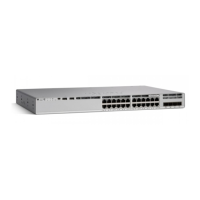CHAPTER
8-1
Catalyst 6500 Series Content Switching Module Configuration Note
OL-4612-01
8
Configuring Additional Features and Options
This chapter describes how to configure content switching and contains these sections:
• Configuring Sticky Groups, page 8-1
• Configuring Route Health Injection, page 8-2
• Environmental Variables, page 8-4
• Configuring Persistent Connections, page 8-8
• Configuring Global Server Load Balancing, page 8-8
• Configuring Global Server Load Balancing, page 8-8
• Configuring Network Management, page 8-13
Configuring Sticky Groups
Configuring a sticky group involves configuring the attributes of that group and associating it with a
policy. Sticky time specifies the period of time that the sticky information is kept. The default sticky time
value is 1440 minutes (24 hours).
To configure sticky groups, perform this task:
This example shows how to configure a sticky group and associate it with a policy:
Router(config-module-csm)# sticky
1
cookie
foo
timeout
100
Router(config-module-csm)# serverfarm
pl_stick
Router(config-slb-sfarm)# real 10.8.0.18
Router(config-slb-real)# inservice
Router(config-slb-sfarm)# real 10.8.0.19
Router(config-slb-real)# inservice
Router(config-slb-real)# exit
Router(config-slb-sfarm)# exit
Router(config-module-csm)# policy
policy_sticky_ck
Router(config-slb-policy)# serverfarm
pl_stick
Command Purpose
Router(config-module-csm)# sticky
sticky-group-id
{netmask
netmask
| cookie
name
| ssl} [address [source | destination |
both]][timeout
sticky-time
]
Ensures that connections from the same client
matching the same policy use the same real
server
1
.
1. The no form of this command restores the defaults.

